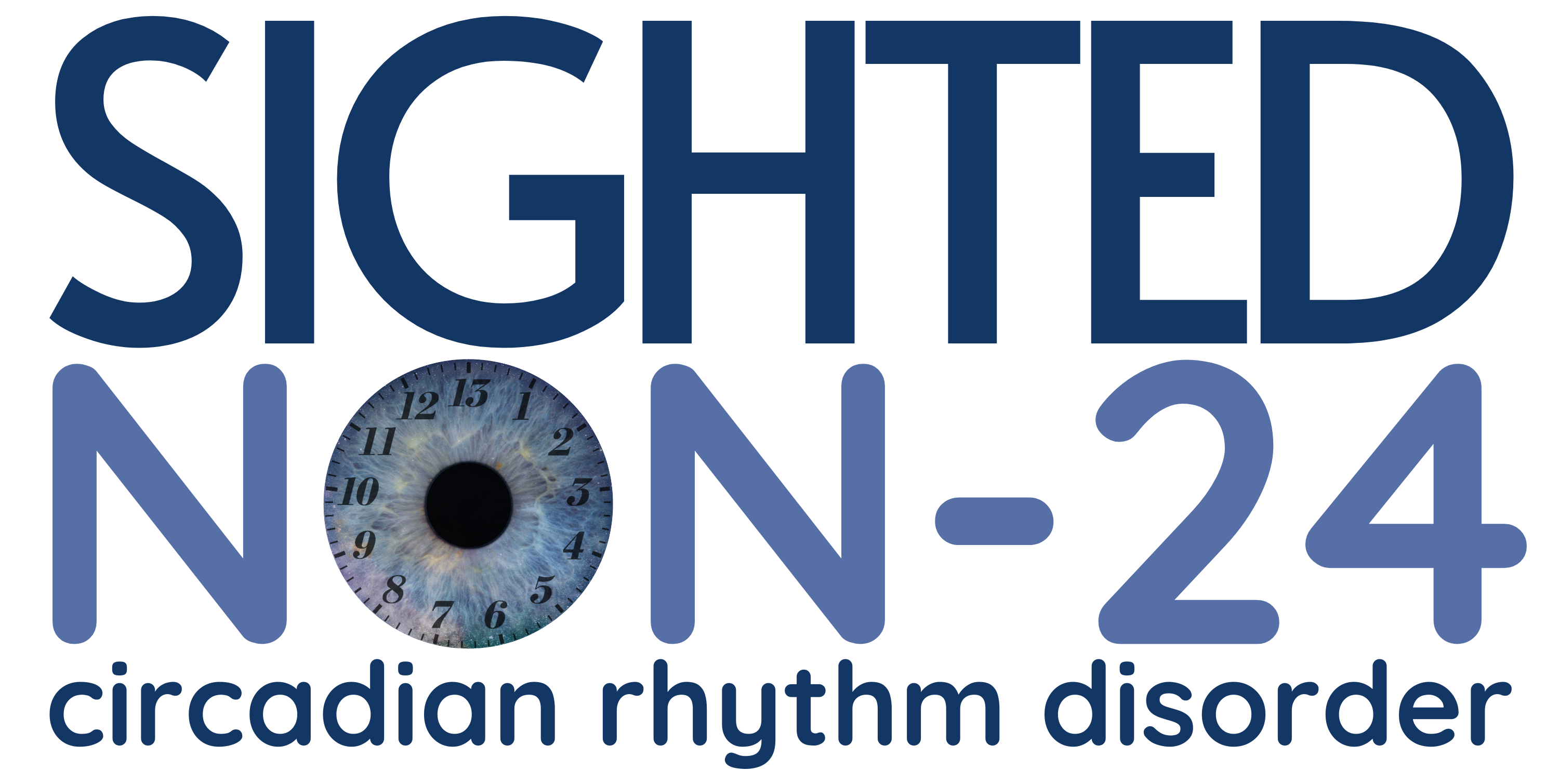Why we advocate for Sighted Non-24 on Rare Disease Day

Rare Disease Day is February 29th on Leap Years and February 28th other years.
Why do we advocate for Sighted Non-24 on Rare Disease Day?
Non-24 is classified as a rare disease and is featured on the National Organization for Rare Disorders website; they claim, “Non-24 occurs in 55-70% of completely blind people, but also occurs in an unknown number of sighted people.” We do not know how many Sighted Non-24 patients exist because there is so little research. Doctors, too, may often fail to recognize that a sighted person can have Non-24.
Non-24 is typically due to a completely blind person’s inability to sense light. Without light cues, the Circadian Rhythm is thrown off its normal 24-hour track. In most cases, a person’s sleep shifts forward around the clock.
But in Sighted Non-24, the causes are much more varied and unclear.
We want sleep doctors, neurologists, medical professionals, and people around the world to recognize that sighted people can have Non-24, too.
Simply because a disease is rare does not mean it doesn’t exist. According to Global Genes, One in 10 Americans is living with a rare disease.
What are some of the causes of Sighted Non-24?
Among others and unknown causes, patients report their Sighted Non-24 is caused by one or more of the following:
- It may be a neurological disorder with abnormal functioning of the suprachiasmatic nucleus (SCN) in the hypothalamus.
- It could be due to the retina being too sensitive or not sensitive enough to light signals. This may relate to the eye itself or neurological processes.
- Sometimes, Delayed Sleep Phase Disorder can develop into Non-24. This is often due to chronotherapy. Chronotherapy is a “treatment” proscribed by patients with DSPD to try and slowly readjust their sleeping habits. Doctors ask patients to force their sleep to a cycle their Circadian Rhythm is not used to and this can create an elongated Circadian Rhythm leading to Non-24.
- A pituitary adenoma (tumor) can cause Non-24. This is a small benign tumor that disrupts the typical flow of chemicals that control hormones, particularly those related to sleep like melatonin.
- There may also be genetic factors at play. Researchers are currently studying the genetic involvement that may be present in Sighted Non-24. Dr. Alina Patke and her associates at The Rockefeller University are among those studying how genetics are involved in Circadian Rhythms.
- There are likely other unknown causes. The Circadian Rhythm is complex and governed by many factors, including hormonal and neurological. We hope raising awareness will inspire researchers to continue searching.
We advocate for Sighted Non-24 because we need more research, doctors who recognize us, and more treatment options for all the known and unknown causes of Sighted Non-24.
